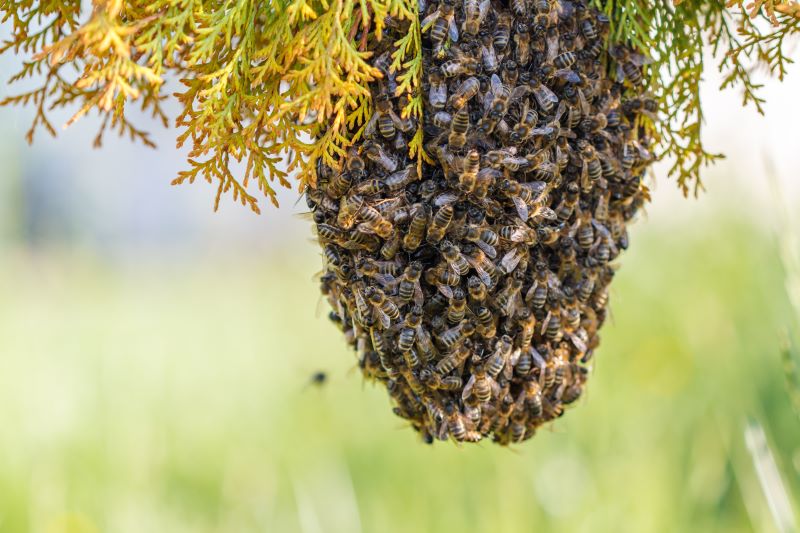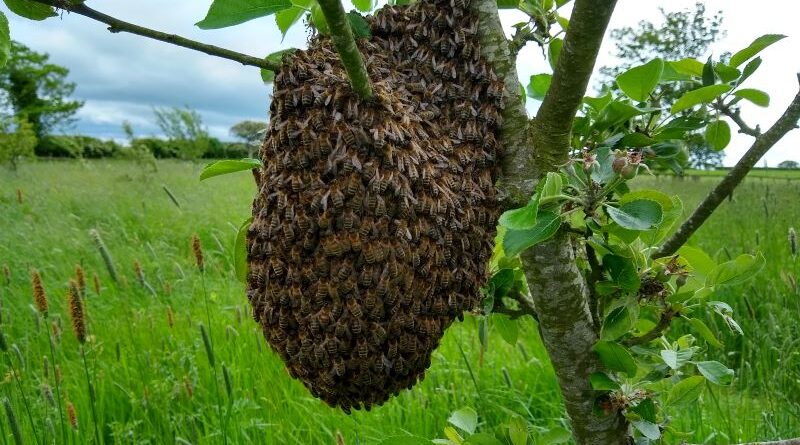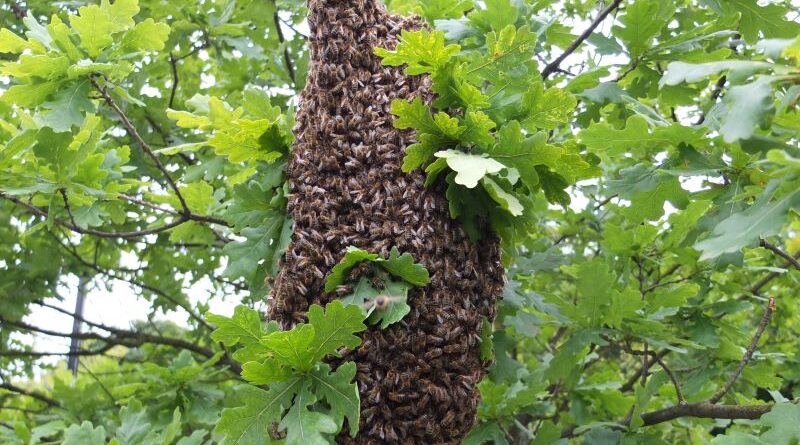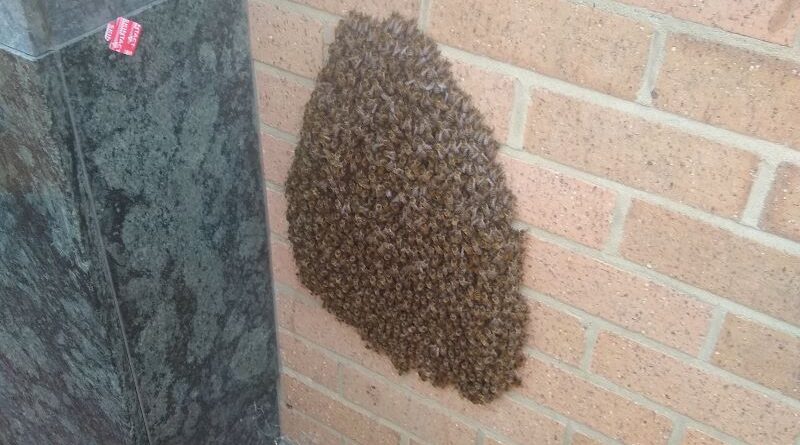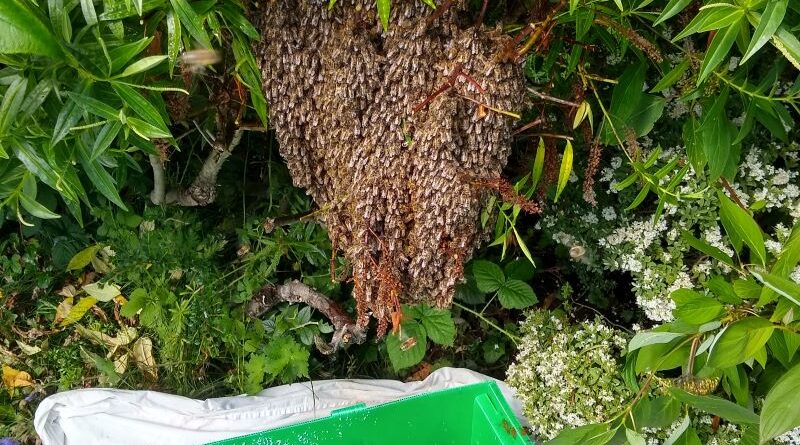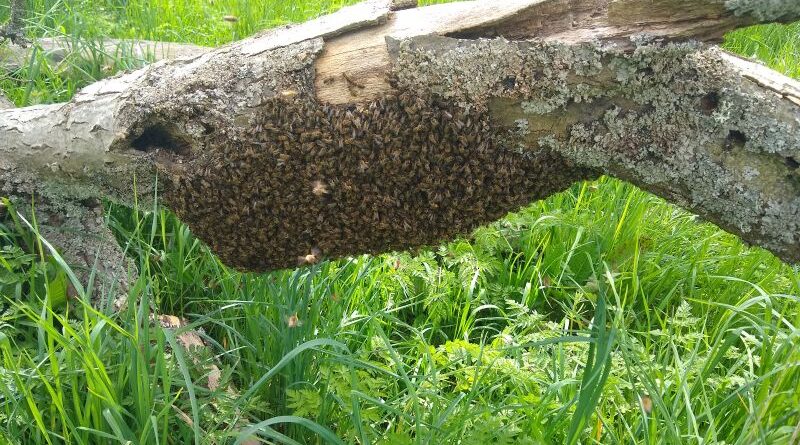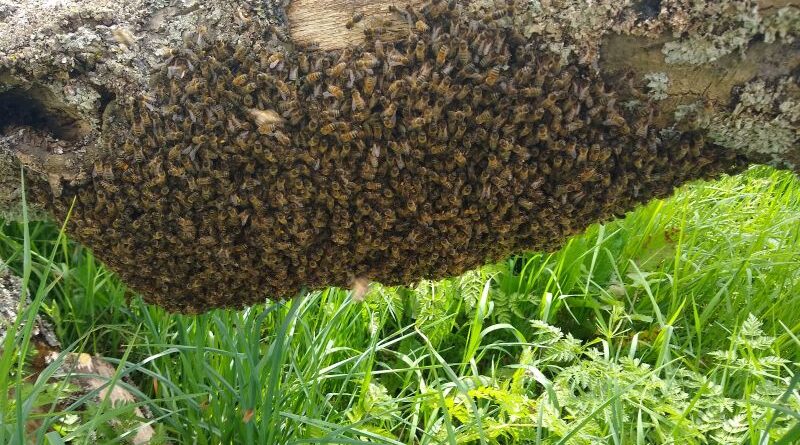Why you might see bee swarms this May
New beginnings is the pinnacle of the spring season; flowers start to bloom, temperatures begin to rise and animals awaken from hibernation. As we approach the later months of the season you can also expect to see swarms of honey bees.
While it can certainly be unnerving, it is a very natural and essential part of their reproduction.
Bee keeper, Ian Campbell, says bee swarms aren’t dangerous if they are left alone. They often settle on a bush or a tree branch, and in some cases, somewhere a little more inconvenient.
“There is nothing to be terribly scared of, they aren’t interested in people they are just looking for a new home” he said.
Why do honey bees swarm?
As a colony builds up in the spring and early summer, it either outgrows its home, becomes too congested, or too populated for the queen’s pheromones to control the entire workforce. The workers recognise it’s time to swarm so they send a signal and leave with their Queen. The honey bees set off in attempt to find somewhere to hang in a cluster until the scout bees find a new place to nest.
Honey bees will also swarm is they experience any of the following issues:
- Parasite or disease infestation
- Frequent disruption cause by human or animals
- Change in weather
- Poor ventilation
What time of year do they swarm?
Honey bees swarming season happens simultaneously with the nectar flow in the spring on warm sunny days from May right to the end of July from 11am to 4pm.
The British Beekeeper Association (BBK) says there is usually a peak of swarms on a fine day after poor weather when temperatures approach the high teens.
Occasionally there is a secondary swarm which takes place later in the season. More often than not these swarms fail in setting up new colonies because they are unable to build new combs and collect enough resources in time to survive the coming winter.
What to do if you see a swarm
If you come across a swarm of honey bees don’t panic, stay calm. While they aren’t interested in people it is best to keep a safe distance, especially children and pets.
Go to the British Beekeeper Association website and use their swam collector map to find a local beekeeper to come and remove the bees before they move into someone’s chimney or wall.
Beekeepers will not collect wasps, hornets or bumble bees.
Feature image credit: AdobeStock, AGA
Gallery images: Ian Campbell
